COVID-19 is the disease in humans caused by a virus called SARS-CoV-2 (Severe Acute Respiratory Syndrome–coronavirus–2). Since late 2019, this newly emerged virus has swept across the world from its origins in China, causing a pandemic. It is likely that this virus came from an animal, but the source has not been confirmed yet.
COVID-19 & Animals -
Frequently Asked Questions
 COVID-19 is the disease in humans caused by a virus called SARS-CoV-2 (Severe Acute Respiratory Syndrome–coronavirus–2). Since late 2019, this newly emerged virus has swept across the world from its origins in China, causing a pandemic. It is likely that this virus came from an animal, but the source has not been confirmed yet.
COVID-19 is the disease in humans caused by a virus called SARS-CoV-2 (Severe Acute Respiratory Syndrome–coronavirus–2). Since late 2019, this newly emerged virus has swept across the world from its origins in China, causing a pandemic. It is likely that this virus came from an animal, but the source has not been confirmed yet.
The UCD School of Veterinary Medicine has put together information on COVID-19 to answer some of the most frequently asked questions in relation to animals and the virus. Click on the FAQs below to find out more.
Pet owners may also be interested in this short video with (opens in a new window)Locksley Messam, Veterinary Epidemiologist at the UCD School of Veterinary Medicine, talking about COVID-19 and pets.
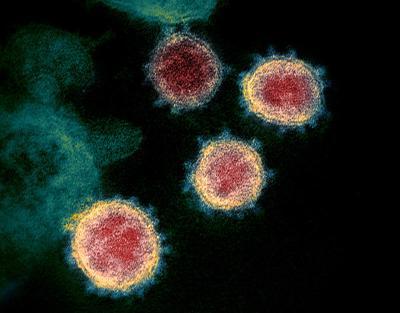 Coronaviruses are a large family of viruses that look similar and cause similar diseases. Different members of the family can infect different animals and some can infect humans. For the most part, if a coronavirus infects a particular animal, then it stays with that animal and does not infect other animals or humans, but sometimes there can be a rare jump of a coronavirus from an animal to a human or another animal. Several coronaviruses can infect humans and most just cause a common cold. In recent times however, there have been three examples of more severe disease caused by coronaviruses – Middle East Respiratory Syndrome (MERS), Severe Acute Respiratory Syndrome (SARS) and of course COVID-19. (Image: Courtesy of the National Institute of Allergy and Infectious Diseases)
Coronaviruses are a large family of viruses that look similar and cause similar diseases. Different members of the family can infect different animals and some can infect humans. For the most part, if a coronavirus infects a particular animal, then it stays with that animal and does not infect other animals or humans, but sometimes there can be a rare jump of a coronavirus from an animal to a human or another animal. Several coronaviruses can infect humans and most just cause a common cold. In recent times however, there have been three examples of more severe disease caused by coronaviruses – Middle East Respiratory Syndrome (MERS), Severe Acute Respiratory Syndrome (SARS) and of course COVID-19. (Image: Courtesy of the National Institute of Allergy and Infectious Diseases)
According to the World Health Organisation (WHO), the disease caused by this virus, known as COVID-19, is commonly characterised by fever, fatigue, shortness of breath and a persistent cough. Less commonly, symptoms include headache, joint pain, chest discomfort, nausea, diarrhoea and sore throat. Approximately 80% of those that show symptoms do not require hospitalisation, 14% will need hospital care and approximately 6% will need critical hospital care.
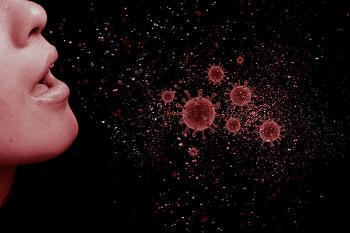 The virus that causes COVID-19 is primarily spread from an infected person to another person through droplets in breath. These droplets can be released by talking, breathing, coughing and sneezing. These droplets may also land on surfaces, where the virus will survive for periods of time. The length of time it survives on a surface is dependent on the surface type, exposure to sunlight, the temperature and the humidity. If a virus is on a surface and a person touches that surface, they may collect virus and unknowingly bring that virus to the nose, mouth or eyes, where the virus can enter the body and potentially cause disease. An infected person with symptoms is the main source of the virus but infected people without symptoms can also spread the virus.
The virus that causes COVID-19 is primarily spread from an infected person to another person through droplets in breath. These droplets can be released by talking, breathing, coughing and sneezing. These droplets may also land on surfaces, where the virus will survive for periods of time. The length of time it survives on a surface is dependent on the surface type, exposure to sunlight, the temperature and the humidity. If a virus is on a surface and a person touches that surface, they may collect virus and unknowingly bring that virus to the nose, mouth or eyes, where the virus can enter the body and potentially cause disease. An infected person with symptoms is the main source of the virus but infected people without symptoms can also spread the virus.
 Because no vaccine is currently available, the most effective way of reducing your chances of catching the virus is to maintain your distance from others where possible (approximately 6 feet/2 metres), to wash your hands regularly with soap and water and to avoid touching your face with your hands.
Because no vaccine is currently available, the most effective way of reducing your chances of catching the virus is to maintain your distance from others where possible (approximately 6 feet/2 metres), to wash your hands regularly with soap and water and to avoid touching your face with your hands.
There is evidence that animals can be infected with the coronavirus that causes COVID-19 and quite recently there have been reports of transmission of the virus from farmed American minks to humans in the Netherlands, Denmark and Sweden. Our current knowledge suggests that American mink are the most susceptible animal species to COVID-19 and that they can spread the virus to humans. There has been no evidence to date that other animals can spread the virus to humans.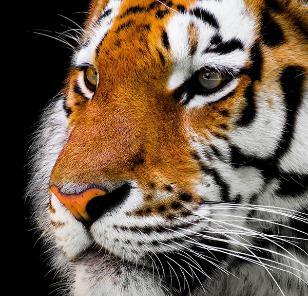
A very small number of dogs and cats in different parts of the world, as well as a number of large cats (tigers and lions) ina zoo in the USA, have tested positive for the virus. The dogs and cats that tested positive had close contact with people with COVID-19. A recent study has revealed that domestic cats can be infected with the virus and can spread infection to other domestic cats. In the same study, dogs, pigs, chickens and ducks did not transmit infectious virus following experimental infection. Egyptian fruit bats, ferrets and Golden Syrian Hamsters have also been infected in a laboratory setting and are able to transmit the virus to others of their species. Scientists do not fully understand why some species are susceptible to the coronavirus that causes COVID-19, while others are more resistant to infection.
Among domestic animals, our current knowledge suggests that cats are the most susceptible species to COVID-19, and that they may develop signs such as mild respiratory signs. However, there is no evidence that cats play a significant role in the spread of COVID-19.
For further information, please see: (opens in a new window)https://www.oie.int/en/scientific-expertise/specific-information-and-recommendations/questions-and-answers-on-2019novel-coronavirus/
In March 2020, the WHO declared a worldwide COVID-19 pandemic. Since then, the disease has spread to almost every country and is maintained by human to human infection. Current evidence suggests that COVID-19 was initially transmitted to a human being from a still unknown wild animal in China.
A similar coronavirus has also been found in groups of Horseshoe bats in China. However, it is not felt that humans were infected by these bats.
Further information can be found on the (opens in a new window)World Health Organisation (WHO) and the (opens in a new window)World Organisation for Animal Health (OIE) websites.
Since December 2019, when the coronavirus that causes COVID-19 was first identified as the cause of the disease, it has been predominantly spread from human to human and the epidemic has spread from country to country by human to human transmission.
Nevertheless, recently there have been documented cases of COVID-19 being spread from humans to mink, transmission from mink to mink and subsequent onward transmission to a small number of humans. This is not surprising as there is evidence that COVID-19 was initially spread from a wild animal to a human. However, animal to human spread of COVID-19 plays little role in the current pandemic.
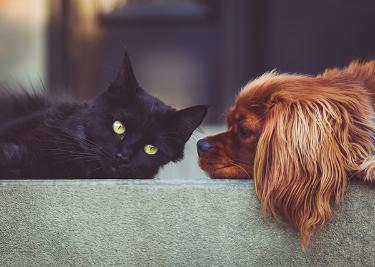
Since December 2019 when it was first discovered, COVID-19 has been predominantly a human disease.
A few studies have shown that cats and dogs can get COVID-19. These instances have been rare and in each case it was likely that the animal got the disease from a human who lived with it and who had COVID-19. Similarly, it has been reported that lions and tigers have been infected after coming into contact with a zoo worker who had COVID-19 as well as mink on farms attended to by infected persons.
Studies have also shown that ferrets, New Zealand White rabbits and golden syrian hamsters can be experimentally infected with the virus that causes COVID-19.
Further information can be found on the World Organisation for Animal Health (OIE) website: (opens in a new window)https://www.oie.int/en/scientific-expertise/specific-information-and-recommendations/questions-and-answers-on-2019novel-coronavirus/
Although current evidence indicates that the virus that causes COVID-19 was initially transmitted to a human being from a wild animal in China, there is no evidence to suggest that wild animals in Ireland are infected with this coronavirus or that COVID-19 has spread from wild animals to either humans or animals in Ireland.
In any case, it is wise to exercise caution when dealing with foxes, mink, bats and other wild animals in Ireland for both their and our benefit.
Specifically:
- Keep a safe distance from foxes and other wild animals
- Do not feed wild animals or touch their droppings
- Do not interact with orphaned foxes or other wild animals
- Do not approach sick foxes or other wild animals
- Do not allow your dogs, cats or other pets to interact with foxes and other wild animals
Further information can be found on the World Organisation for Animal Health (OIE) website:
To date there have been no studies on COVID-19 or coronaviruses in bats in Ireland. A small number of coronaviruses have been found in some European bat species but none are similar to the coronavirus that causes COVID-19. A similar coronavirus has been found in groups of Horseshoe bats in China. However, it is not felt that humans were directly infected by these bats.
Nevertheless, as with all wild animals, it is wise to be careful when dealing with bats in Ireland.
Specifically:
- Keep a safe distance from bats
- Do not feed bats or touch bat droppings
- Do not approach sick bats
- Do not allow your dogs and cats (or other pets) to interact with bats
The global pandemic of COVID-19 is a result of human-to-human spread. To date, there is no evidence that companion animals or other domestic animals play an important role in the spread of the virus or are a danger to human beings. It is currently felt that the risk of animals spreading the virus to humans is low.
Consequently, there is no reason to abandon a companion animal or to give it to a shelter as a result of the pandemic.
Additionally, pets are excellent sources of companionship both for children and adults. This role is even more important while lockdown and/or social distancing measures are in place as they can be a support to people during times of loneliness and isolation.
Since December 2019, when COVID-19 was first discovered, it has been predominantly spread from human to human.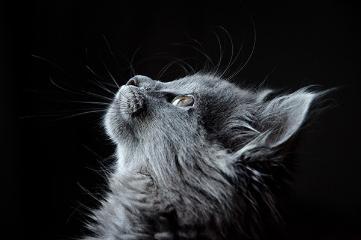
Although there is evidence that infected cats can spread the virus to each other, there have been no documented cases of a person getting COVID-19 from a cat, dog or any other domestic animal.
Nevertheless, recently there have been documented cases of COVID-19 being spread from American mink on mink farms back to humans after initially being spread from infected humans to the mink. This is not surprising as there is evidence that COVID-19 was initially spread from a wild animal to a human.
Animals suspected or confirmed to be infected with the virus causing COVID-19 should be kept separate from other animals and humans while infected.
It is recommended that all persons interacting with animals (including pet and livestock owners and breeders, shelter and zoo workers and veterinarians) exercise strict hygiene at all times.
This includes regular hand washing:
- After touching or interacting with animals or their products
- After touching or playing with an animal
- After feeding your pet or handling its food
- After handling pet habitats or equipment (cages, tanks, toys, food and water dishes, etc.)
- After cleaning up after pets
- After leaving areas where animals live (coops, barns, stalls, etc.), even if you did not touch an animal
Further information can be found on the (opens in a new window)World Organisation for Animal Health (OIE) and the (opens in a new window)Centers for Disease Control and Prevention (CDC) websites.
Since December 2019, when COVID-19 was first identified, it has been predominantly spread from human to human.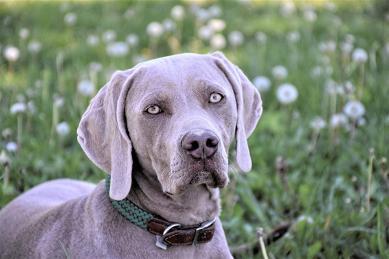
However, there have been cases in which cats and dogs living with an infected person have gotten the virus and it appears that cats are more likely to get ill than dogs, when infected. Additionally, there has been a report of tigers, lions (in a zoo) and minks (on a farm) being infected after close contact with carers who had or were infected with the virus.
Hence, it is advisable that, if a person is infected with COVID-19, they should self-isolate from all animals and humans..
Specifically:
- They should observe social distancing with regards to both humans and animals
- They should not allow their pets to enter their room or sleep on their bed while self-isolating
- They should not feed or share food with their pets
- They should not pet, groom or kiss any animal or allow it to lick them
- They should not change their pet’s bedding
- They should not walk their dog
Care for the pet of anyone infected with COVID-19 should be delegated, where possible, to an uninfected household member.
Further information can be found on the (opens in a new window)World Organisation for Animal Health (OIE) and (opens in a new window)Centers for Disease Control and Prevention (CDC) websites.
During the COVID-19 pandemic, persons are required to exercise social distancing and those who are infected are required to self-isolate for at least 14 days. Essential workers are not required to exercise social distancing during the execution of their duties. Your dog, if it is a service animal, depending on the service it provides you, could be providing an essential service as its presence may be necessary to your normal functioning and wellbeing.
Nevertheless, your pet’s health and welfare is very important and it should be protected from infection to the greatest extent where possible with the aid of others in your home. If it is determined that your dog must stay in the room in which you are self-isolating, the room should be well ventilated at all times and you should maintain regular hand washing before and after interacting with your dog, if possible.
You should avoid:
- Coughing and/or sneezing close to your dog
- Petting, grooming and kissing your dog or allowing it to lick you
Additionally, where possible, you should have another household member:
- Feed your dog
- Change your dog’s bedding
- Walk and provide for your dog’s general needs
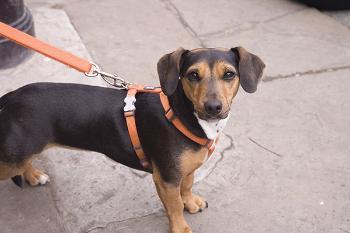 Walking a dog is helpful to human health and wellbeing and is essential for dogs that do not have access to private outdoor spaces in which to exercise. If you are not infected with the virus and don’t need to self-isolate, then you can walk your dog. However, while the dog is being walked, social distancing guidelines should be observed and applied both to the dog walker and the dog being walked.
Walking a dog is helpful to human health and wellbeing and is essential for dogs that do not have access to private outdoor spaces in which to exercise. If you are not infected with the virus and don’t need to self-isolate, then you can walk your dog. However, while the dog is being walked, social distancing guidelines should be observed and applied both to the dog walker and the dog being walked.
Specifically:
- Do not go to places where a large number of people and dogs gather
- Maintain two meters distance from other people and animals
- Keep your dog on a leash
- Do not allow others to pet your dog while out on a walk
Further information can be found on the Department of Agriculture, Food & the Marine's website: (opens in a new window)https://www.agriculture.gov.ie/customerservice/coronaviruscovid-19/faqsregardingcovid-19foranimalowners/
 If you have symptoms associated with COVID-19 or have tested positive for COVID-19 and are within the period of self-isolation you should follow HSE Guidelines and not leave your home. See (opens in a new window)https://www2.hse.ie/conditions/coronavirus/managing-coronavirus-at-home/self-isolation.html for further information.
If you have symptoms associated with COVID-19 or have tested positive for COVID-19 and are within the period of self-isolation you should follow HSE Guidelines and not leave your home. See (opens in a new window)https://www2.hse.ie/conditions/coronavirus/managing-coronavirus-at-home/self-isolation.html for further information.
Nevertheless, exercise is important for the health and welfare of dogs that do not have access to outdoor spaces to exercise at home and arrangements should be made for those dogs to be walked. Consequently, if you have a dog that needs to be walked, then another household member that is not self-isolating can take it for a walk in accordance with HSE guidelines for people in quarantine. While the dog is being walked, social distancing guidelines should be observed. These apply equally to the dog walker and the dog being walked.
Specifically:
- Do not go to places where a large number of people and dogs gather
- Maintain two meters distance from other persons and dogs
- Keep your dog on a leash
- Do not allow others to pet your dog while out on a walk
COVID-19 is spread from human to human by:
- Respiratory droplets during coughing and sneezing
- Direct contact between humans or contact with surfaces containing respiratory secretions
- Micro-aerosols (invisible respiratory secretions) coming from our nostrils during exhalation
Information regarding spread to animals from humans is limited at present but it is felt that the virus can be spread from humans to animals or from animals to other animals in a similar way.
Since the initial discovery of COVID-19 in China in 2019, transmission has been largely from human to human and there have been very few documented cases of COVID-19 infection in household pets. Thus, little is known about the clinical signs to be expected from this disease in animals. Most documented infections have been found in pets living in households where a human being has had COVID-19.
If your pet is showing signs of illness and no one in the household has had COVID-19, then it is unlikely that the illness is due to COVID-19.
If a member of the household has had COVID-19 and your pet becomes infected, the following signs are among those that it is likely to have:
- Fever
- Coughing
- Difficulty breathing
- Lethargy
- Sneezing or nasal discharge
- Vomiting
- Diarrhea
It is important that you notify and consult with your veterinarian who will advise you of the likelihood of your animal being infected with COVID-19 and what to do.
Although the virus causing COVID-19 was initially transmitted to a human being from a wild animal, the current global pandemic is a result of human-to-human spread of the virus and there is no evidence that animals play an important role in spreading it. Consequently, routine testing for COVID-19 in animals is not being carried out in Ireland. If you are concerned, you should consult with your veterinary practitioner who will advise you of the best course of action.
It is important that you do not bring your animal to your veterinary practitioner, instead alternative arrangements will need to be made if your animal requires urgent veterinary attention. You should phone your veterinary practice to alert them and to allow them to make the necessary arrangements.
Irish Government Advice: Department of Agriculture, Food & the Marine (DAFM)
This website provides good advice for animal owners. It divides the advice into general advice and advice for those in a household with a confirmed case of COVID-19.
World Organisation for Animal Health (Office International des Epizooties)
This website provides fairly detailed information on SARS-Coronavirus 2 in animals from the perspective of a global organisation, headquartered in Paris, that oversees veterinary infectious disease monitoring and control. The information is both text based and in the form of short videos.
Centers for Disease Control and Prevention (CDC)
Internationally recognised body for the tracking and prevention of infectious diseases of public health significance. Based in Atlanta, Georgia, USA. Provides excellent, user-friendly information. The second link takes you to an FAQ type page with additional information.
(opens in a new window)https://www.cdc.gov/coronavirus/2019-ncov/daily-life-coping/animals.html
(opens in a new window)https://www.cdc.gov/coronavirus/2019-ncov/faq.html#COVID-19-and-Animals
American Veterinary Medical Association (AVMA)
This website provides useful information for pet owners in a question and answer style.
Federation of Veterinarians of Europe (FVE)
This website provides a European veterinary perspective on the disease with some useful advice for pet owners who need to visit their veterinarian.
(opens in a new window)https://www.fve.org/covid-19-faqs/
World Health Organisation (WHO)
A very useful and reliable site for general information and a global perspective on COVID-19.
(opens in a new window)https://www.who.int/news-room/q-a-detail/q-a-coronaviruses
UK Research and Innovation (UKRI)
Provides an excellent array of resources to help understand this virus infection. The second link deals with animal infections as well as providing some useful scientific references.
(opens in a new window)https://coronavirusexplained.ukri.org/en/
(opens in a new window)https://coronavirusexplained.ukri.org/en/article/cad0008/
World Small Animal Veterinary Association (WSAVA)
This website provides a range of resources for veterinary practitioners. The second link is for an advisory document which provides some background on the infection and advice for pet owners.
Information prepared by Drs. Gerald Barry, Nicola Fletcher, Bryan Markey and Locksley Messam.
Page last reviewed on 26th November 2020.